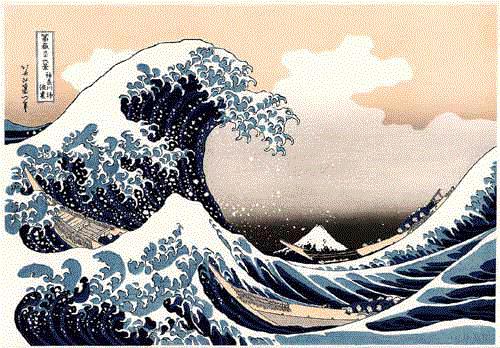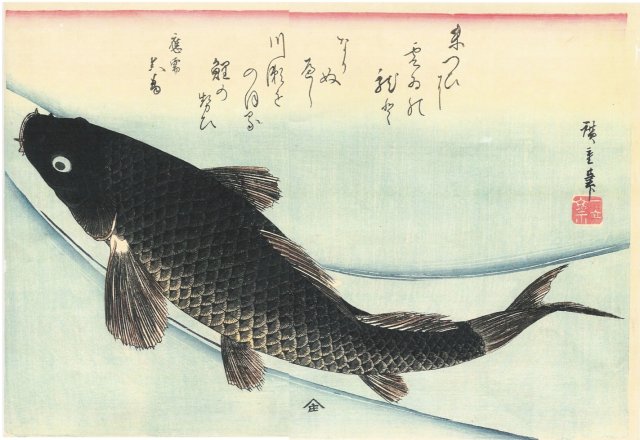
By C. W. Porter

On December 7, 1928, a group of distinguished Senators gathered in the Capital Building at Washington D.C. to discuss ratification of the Briand-Kellogg Peace Pact, an instrument whose purpose was to “abolish aggressive war”.
Among those present was the author of the Pact, Secretary of State Frank B. Kellogg.
During the course of the recorded discussions, the following exchange took place:
“Q: Suppose a country is not attacked - suppose there is an economic blockade...?
A: There is no such thing as a blockade [unless] you are in war.
Q: It is an act of war?
A: An act of war absolutely... as I have stated before, nobody on earth, probably, could write an article defining 'self defense' or 'aggressor' that some country could not get around; and I made up my mind that the only safe thing for any country to do was to judge for itself within its sovereign rights whether it was unjustly attacked and had a right to defend itself and it must answer to the opinion of the world.”
The above was quoted during the Tokyo Trial by American defense council to show that Japan's War of the Pacific, according to the very terms of the Brian-Kellogg Pact itself, did not and could not constitute "aggression".
Japan’s War of the Pacific was a
war of self-defense for the following reasons:
- blockade is an act of war (p.
43,051);
- every nation is the judge of what constitutes self-defense (ibid);
-
no submission to any tribunal is required by the Pact (pp. 42,162; 42,240);
-
self-defense is not limited to defense of the national territory (p. 42,239);
-
the Pact does not contain any sanctions, express or implied (pp. 42,163);
-
breach of treaties does not constitute aggression (p. 42, 191);
- American aid
to the Chinese made America a belligerent in that war (see Note, below);
-
declarations of war are not required in self-defense (pp. 42,431-5);
- no treaty
requires any warning prior to attack (pp. 42,447-8);
- declaration of war prior to attack was intended, but was delayed due to
clerical errors on the part of Embassy staff in Washington (pp. 43,704-18; see
also p. 42, 448- 51).
It was argued further that:
- the attack on Pearl Harbor was not illegal under international law (pp. 42,403-513; 43,493-738);
- Japan was provoked into a war of self-defense (pp. 43,050-175);
- Japan was not prepared militarily for war (pp. 43,177- 222);
- Japanese military preparedness was not aggressive (pp. 43,224-263).
Japan is an island nation devoid of natural resources, overpopulated, dependant on imports of nearly all commodities for manufacture. Most of Japan is mountainous or infertile; most cities are on the coast.
Japan must be a naval nation; every major city in Japan can be destroyed by coastal shelling from battleships, to say nothing of airplanes.
Japan was not prepared for war in the Pacific.
Japan never prepared for combat in tropical regions; military supplies and equipment were designed for combat in cold climates (pp. 26,949; 43,244).
Most Japanese ships were small, for the coastal trade; many were built of wood (pp. 24,915; 43,076; see also p. 24,929).
2 destroyers were added to the Japanese fleet in 10 years, 1931-1941, reaching a total of 112 in 1941 (ibid).
Japan had no long-range aircraft carriers. Japanese carriers could not
refuel at sea (pp. 26,719-20; 43,221);
Japanese ships were built for patrolling
shallow Japanese coastal waters (pp. 11,272; 43,202).
Japan did not stockpile any commodity except oil for any purpose in 1941.
Japan planned to store 36,000 kiloliters of oil by 1943 (pp. 24,855; 43,241).
Japan did not store ammunition or oil in Formosa or southern parts of Japanese territory overseas (pp. 26,951; 43,246).
Japan did not develop a merchant marine (pp. 24,965; 43,076).
Japan had few civilian aircraft or ships capable of conversion (pp. 26,671; 43,201).
Japan suffered from an acute food shortage in 1939-40 (pp. 25,050-2; 43,101).
The American embargo applied to foodstuffs, including rice, tea, soy beans, wheat flour, fertilizer, fodder, edible fats and seeds (pp. 36,966-8; 43,131; 25,255-9; 43,162-175).
Synthetic oil could not be produced due to a lack of high pressure steel pipes, coal and cobalt (pp. 24,870; 43,134).
Japan possessed 11,654 military aircraft (pp. 8,030-1; 43,070) and 65 submarines in 1941 (pp. 11,261; 43,194).
Japan built 1,380 army planes in 1941 (pp. 18,293; 43,240).
Japan’s initial conquests after Pearl Harbor were achieved using 1,175 land planes; 475 carrier planes; 13 divisions of army; and a “handful” of marines (pp. 39,391; 43,262).
Japan negotiated for 9 months prior to the attack. In the course of these negotiations, the Americans demanded a guarantee of freedom from attack by Japan regardless of any action taken against Germany (pp. 43,517-21).
Japan agreed, repudiating the Tri-Partite Pact (pp. 43,522- 39).
Japan gave the Americans permission to publish the text of the repudiation (p. 43,642).
Japan offered to withdraw all troops from China (pp. 25,856; 43,588) or at least 90% (p. 43,604).
Japan received no response to either concession (43,602).
Japanese cables (decoded by the Americans in violation of international law) were so badly mis-translated by American Nisei that they probably helped cause the war (pp. 43,607-21).
(As far as one can tell, no Nisei translators of Japanese were used in war crimes trials of Japanese military personnel. Affidavits in English were supposed to have been translated orally and accurately on sight to Japanese affiants prior to signature by translators who were British or American, frequently with Jewish names).
The Americans froze Japanese assets (in violation of a treaty) and began to embargo oil. It was demanded, as a condition to restoring normal relations, that Japan sign an agreement with various other nations who had never before been party to the negotiations, including Thailand and Soviet Russia (pp. 43,678-98).
To obtain agreement with the other nations in accordance with this demand could have taken months or years; and might never have been possible. Japan had enough oil for a few months only. A conference was held at which it was decided that if there was to be war, it must come now; by spring Japan would be too weak to fight. In any case, the attack on Pearl Harbor was an act of utter desperation. The oil embargo meant the destruction of Japan’s independence and perhaps survival as a nation.
Japan faced immediate military defeat in China; total industrial collapse at home; and destruction through coastal shelling of all the major cities by any one of five traditional enemies (America, Britain, China, the Netherlands, and particularly the Soviets).
Oil had been supplied to Japan for two years in the teeth of hostile public opinion. It was believed essential to keep war out of the Far East;
Roosevelt wished to import rubber, tin, etc from the South Pacific, supplying the British in the Near East with meat, wheat, corn, troops, and military supplies (pp. 25,316-7; 43,121).
When this did not work, Japan was forced into war, crushed with atomic bombs, and her leaders hanged for “aggression”.
War with Japan had been avoided - as long as it was believed that Germany could be provoked into a declaration of war through bombing and ramming attacks on German and Italian ships and submarines, and many other violations of international law (pp. 42,436; 43,639).
Japan attempted to negotiate a surrender for 11 months prior to the atomic bombings (pp. 23,582-610).
That America, Britain and Holland conspired “aggressive war” against Japan is proven by the report of the conversations at the Most Secret American-Dutch-British Conversations held in Singapore in April 1941:
“It was important to organize air operations against Japanese occupied territory and against Japan itself. It is probable that her collapse will occur as a result of economic blockade, naval pressure, and air bombardment”.
Space does not permit further discussion of the crimes of this nation of monsters (we are referring to the Americans...).
(Note: almost no use was made of the argument that America was a belligerent
in the China Incident. The Incident was a “conflict” rather than a “war”
in the sense that belligerent and neutral rights were not invoked: diplomatic
relations were undisturbed; enemy aliens in Japan were not interned, etc.
Rather, it was maintained that if it was a war, then American aid to China made
America a belligerent subject to attack without formality. The Americans claimed
it was a war in which they could participate without becoming a belligerent.)
See also:
The Tokyo War Crimes Trial by C.W. Porter
Japs Ate My Gall Bladder by C. W. Porter
Translation of the above into Russian NEW IN RUSSIAN
The Myth of Japanese Atrocities Against Prisoners in Mukden by C.W. Porter
Japan was Provoked into a War of Self Defense by C.W. Porter
The Myth of Japanese Atrocities at Nanking by C. W. Porter
Affidavits in Foreign Languages by C.W. Porter
Recommended site for Japanese revisionism: http://www.jiyuushikan.org/e/

Return to ARTICLES PAGE
Return to CONTENTS PAGE